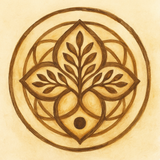The Cornerstones of Ayurvedic Healing

Ayurvedic treatment aims to restore the doshic balance through a combination of diet, lifestyle changes, herbal remedies, and therapeutic treatments. The approach is highly personalized, as what works for one person may not work for another.
Diet and Nutrition
Ayurveda considers food as medicine. The diet is tailored to an individual’s dosha and current state of imbalance (vikriti). Food is also categorized by its taste (rasa), energy (virya), and post-digestive effect (vipaka). For example, a person with a high Pitta dosha would benefit from cooling, sweet, and bitter foods to counteract the fire, while a Vata person would be advised to eat warm, grounding, and nourishing meals.
Herbal Remedies (Dravyaguna)
Ayurveda has a vast materia medica of herbs, minerals, and other natural substances. Herbs are used in various forms—powders (churna), tablets (vati), oils (taila), and ghees (ghrita)—to cleanse, restore, and rejuvenate the body. Some well-known Ayurvedic herbs include Ashwagandha (for stress and vitality), Turmeric (a powerful anti-inflammatory), and Neem (for skin and blood purification).
Therapeutic Treatments
Ayurveda offers a range of therapeutic procedures, collectively known as Panchakarma, which means "five actions." These are intensive detoxification and rejuvenation therapies designed to eliminate deep-seated toxins and restore the body's natural healing ability. Panchakarma includes treatments like:
- Abhyanga: A full-body massage using warm herbal oils.
- Shirodhara: A continuous stream of warm oil poured on the forehead to calm the nervous system.
- Nasya: Nasal administration of medicated oils to cleanse the head and sinus passages.
- Basti: Medicated enemas to cleanse the lower colon.
- Vamana: Therapeutic vomiting to remove excess Kapha.
These therapies are not merely relaxing; they are deeply therapeutic and are always performed under the guidance of a qualified Ayurvedic practitioner.





